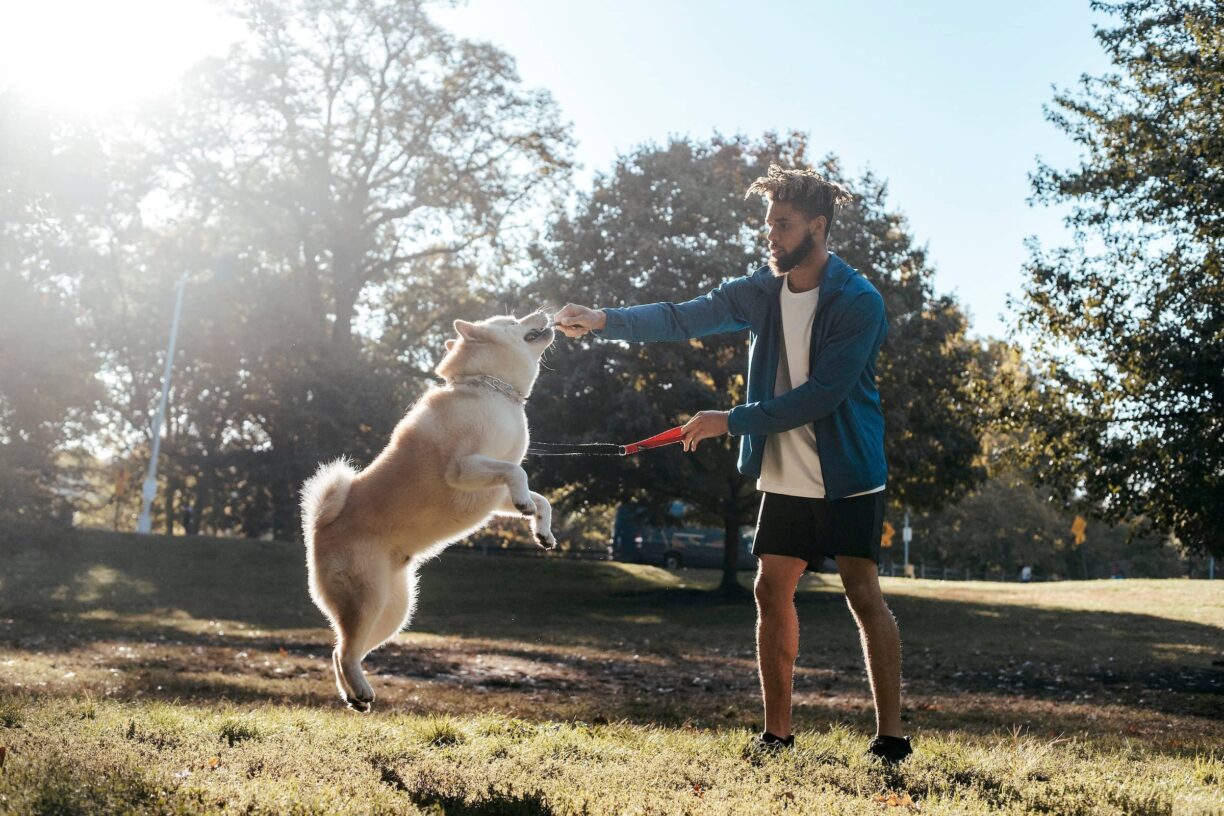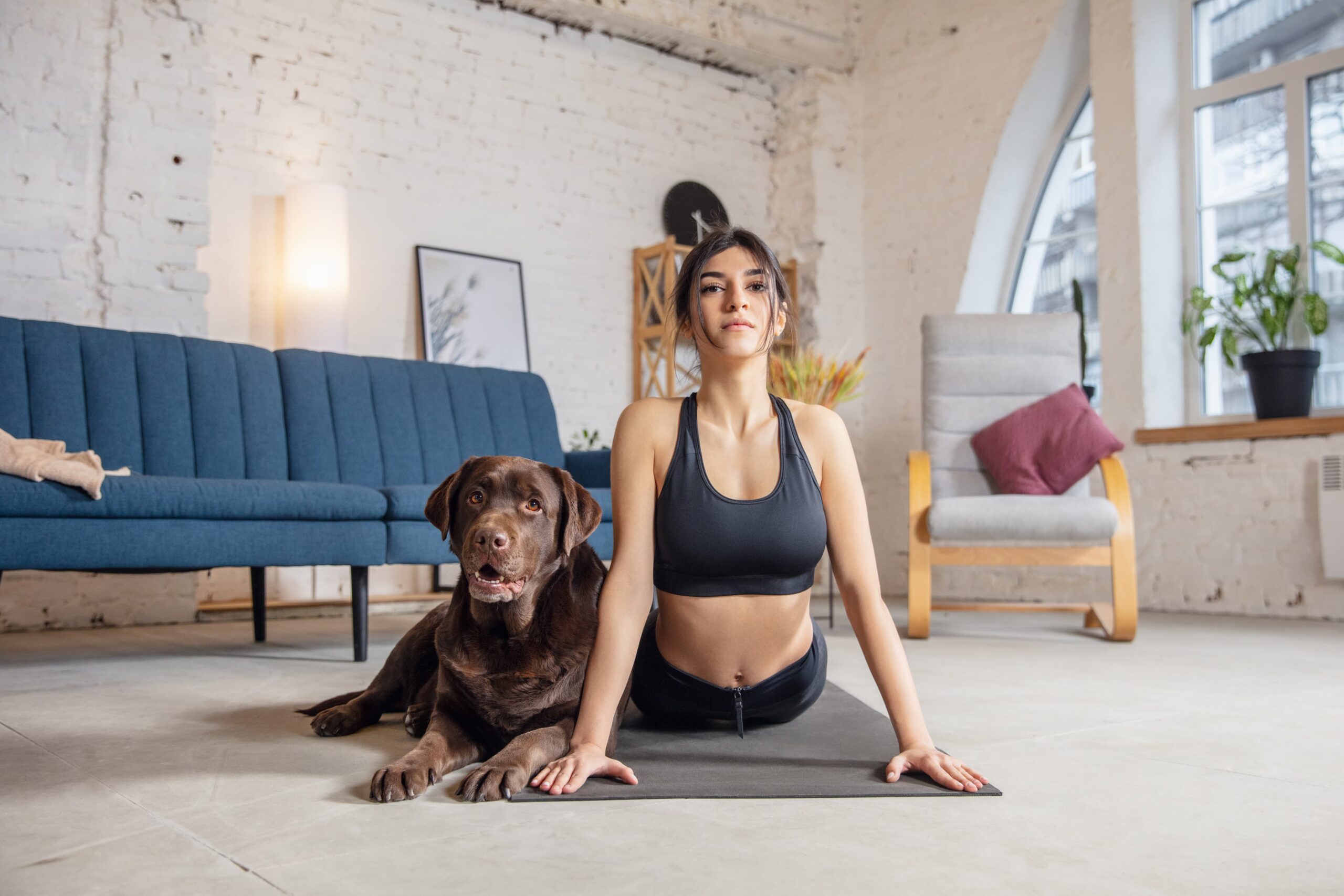It’s National Pet Month in the UK, making it the right time to refresh our thinking about how we can be responsible owners and the best caregivers possible for our furry friends.
Over the past few years, animal-focused workouts have seen a surge in popularity with activities such as canicross seeing a 24% increase in interest since last year. There are also options like puppy yoga which add a whole lot of cuteness to an already popular activity.

Although it may seem like a great way to add an extra element of fun to our workouts, it’s important to consider animal welfare and safety before getting your pets involved, particularly if you’ve not participated in this sort of activity before.
For those looking to get in some extra bonding time with their four-legged friend, Ian Scarrott, Running Coach and Personal Trainer at PureGym and Emma Lee, Nutrition Expert at Burns Pet Nutrition have put together some top tips for safely working out with your dog.
Ian’s thoughts and top tips:
“Like anything in life, exercise can become monotonous, so it is important to try new routes, varying types of sessions, time your run, and of course, if you have a pet that is able to run with you, make it more fun for them and you.
“If your dog is a little fitter than you, find ways to creatively channel the energy to give them the workout they need whilst giving yourself a bit of a breather.
For example, you could run to a park together and get some rest for yourself while keeping them active by playing a game of fetch.
It really depends on the breed you have, as well as their individual preferences, as to whether you feel this is appropriate! Some dogs may be more suited to intervals of short sharp bursts of speed, others may love a long-distance run.”
- Try hands-free running – You may want to try hands-free running where you are connected by a secure waistbelt which means you are free to concentrate on the route, it also means your hands are free if you should take a tumble. It can help to avoid being pulled around uncomfortably, especially at speed.
- Get kitted up correctly – Make sure the harness you use is comfortable for the animal and doesn’t restrict their breathing or cause them any discomfort. Above all you want this to be a fun experience for you and your pet.
- Teach your pet new voice commands – This can be a bonding experience for you and your pet, and if it’s a dog you’re training for example it may be helpful in them learning new voice commands, meaning you are more in sync not only when running but also in everyday life.
“Working out with a pet can also help to increase your motivation. Your animal requires a walk so why not add in more intense exercise, it can certainly help you increase your activity levels and help you maintain a level of accountability in your training.
“It will also benefit your heart health, physical health, and mental health. Whether it’s the increase in cardio-based activity, the extra core strength you are developing from working with a canicross cable, or even the bonding experience of spending time with your pet.
“Animals are a comfort and a joy to own, and when included in our running lives it can be a real joy for all involved.”
Although the premise of exercising with your dog is simple, and it doesn’t take too much to get started, it’s important to consider your pet’s specific requirements – are they already fit and healthy? How often should they be participating in this activity?
Nutrition Expert, Emma Lee, from Burns Pet Nutrition has compiled her advice for owners that may be looking to include their pet in their workout:
- Consider the breed of your dog – Potentially any healthy dog can be trained to run with you. There are, however, some considerations that must be made when deciding to start any sport with your dog. Caution must be taken with brachycephalic (flat-faced) breeds. These dogs often have problems with breathing and will struggle in the hotter weather as they are not able to cool down effectively. Being able to lose heat is also going to be an issue for some of the double-coated or heavier-coated breeds such as Siberian Huskies. Some breeds that are very prone to orthopaedic issues should also be treated with caution. Dachshunds for example are genetically prone to IVDD (disc disease) and a lot of larger breeds may be more predisposed to conditions such as hip dysplasia.
- How fit is your pet? – Many dogs will need their fitness built up, much like us humans need to. You will also need to consider the terrain you are running your dog on. Running is a high-impact sport so take care when running on firm ground. Also, be careful on uneven terrain. Dogs will be susceptible to similar types of skeletal and muscle injury that we are! Make sure you are observing your dog and watching for signs of pain or discomfort. It is also essential that you allow your dog time to warm up and cool down. There are many stretches and exercises that you can get your dog to do that will help with reducing the likelihood of injury.
- Monitor food and drink – You should feed them at least 1 hour before exercise, and ideally earlier than that to give them enough time to digest the food. We would recommend feeding 2 hours before and not feeding for 2 hours after. If you try to feed your dog too much, or too close to active exercise this can lead to the risk of issues such as bloating. Hydration is also important, particularly in warmer weather. A loss of just 7% of your dog’s body water can lead to severe dehydration and a 15% loss can be fatal. It is important to remember not to let them drink too much in one go however, make sure they rehydrate steadily rather than drinking too much, too fast.
“Taking part in a sport with your dog can be beneficial for both you and your furry family member and should be encouraged more often.
It helps to increase and maintain fitness and physical and mental health and can also strengthen your bond. But is it only dogs that can benefit from this? Research suggests not.
For example, some research has found that fish can recognise and form attachments with main caregivers, so move your workout in front of the fish tank!”
If you’re lacking the motivation to keep up with your fitness routine, why not mix it up and try including your pet in the action.
Take it slow at first to make sure they’re comfortable with the activity, make sure they eat and drink sufficiently, and enjoy this unique bonding experience that both you and your pet are bound to enjoy.
